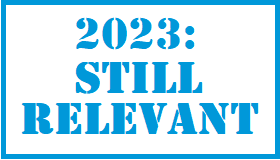 A very dangerous development is heading to Congress. Worth billions in taxpayer dollars, Westlands Irrigation District appears poised to get a secure water contract despite their junior water claims and without acreage limitations. There is also no requirement to “solve” their toxic runoff drainage problem.
A very dangerous development is heading to Congress. Worth billions in taxpayer dollars, Westlands Irrigation District appears poised to get a secure water contract despite their junior water claims and without acreage limitations. There is also no requirement to “solve” their toxic runoff drainage problem.
This is a scam of staggering proportions. Congress will need to approve the deal that was negotiated by the Bureau of Reclamation in secret. 40 some years trying to reign in Westlands desert agriculture seems to be down the drain unless Congress stops this outrage. And that will take all of us protesting this taxpayer give-away with no accountability for Westlands grabbing Sacramento Valley/Trinity River water in a secure contract and fouling San Joaquin Valley groundwater or discharging these contaminants to rivers and aqueducts of that region. Westlands is also the largest buyer of additional water sold out of the Sacramento Valley to grow permanent crops in one of the most arid parts of California. Read this explosive article:
Los Angeles Times, 9.11.15 – The federal government is poised to sign a settlement with the Westlands Water District that would resolve a decades-long legal fight over badly drained, tainted farmland on the west side of the San Joaquin Valley.
U.S. Interior Department officials on Friday told three Northern California congressmen that the department could sign the agreement as early as Tuesday.
“The deal is done. There is no more negotiation,” said Rep. Jared Huffman, (D-San Rafael), who was briefed on the settlement along with Rep. Jerry McNerney (D-Stockton) and Rep. John Garamendi (D-Walnut Grove).
McNerney and Huffman said Interior representatives did not show them a copy of the proposed settlement, but informed the three legislators that it was similar to a 2013 draft agreement.
Under the draft, the U.S. Bureau of Reclamation would be relieved of its obligation to provide drainage to several hundred thousands of acres of Westlands cropland. The district would permanently retire 100,000 acres of ill-drained fields and agree to a cap on water deliveries that amounts to 75% of its current contract amount.
In return, the reclamation bureau would let Westlands off the hook for the roughly $350 million the irrigation district owes federal taxpayers for construction of a portion of Central Valley Project facilities. The government would also lift limits on the size of Westlands farms eligible for subsidized water deliveries and give the district an open-ended water contract that did not require periodic renewal.
The Interior Department declined to discuss the matter. “No settlement has been finalized at this point in time and therefore we are unable to comment in greater detail,” Kevin Thompson, the agency’s deputy director of communications, said in an email.
In an interview, Tom Birmingham, Westlands general manager, said he did not know when Interior would sign the agreement, but added “I’m hopeful it will be very, very soon.”
Birmingham said he expects the district board to approve the settlement. Once signed by Interior and Westlands, the agreement would go to Congress for approval.
Westlands is the biggest — and most contentious — contractor in California’s sprawling federal irrigation system. So a deal that changes the terms of its water contract and forgives its substantial debt will be heavily scrutinized.
“Westlands is going to get away with a lot here,” McNerney contended.
Thanks to local geology and a high water table, the soil in a good portion of Westlands is loaded with mineral salts and selenium, a natural trace element. The salts are harmful to crops and when concentrated in field drainage, the selenium reaches levels that are toxic to wildlife.
After waterfowl in a wildlife refuge were poisoned by Westlands drain water in the 1980s, the reclamation bureau shut down the region’s master drain. That led to decades of legal wrangling and ultimately a court order that the federal government was under legal obligation to provide drainage.
In 2007, the reclamation bureau proposed a $2.7-billion project that would have permanently retired 200,000 acres of badly drained cropland and also called for treatment facilities to cleanse tainted drain water from other fields.
The high price tag doomed the proposal, spurring continued negotiations to settle the issue.
Under the pending settlement, Birmingham said “the government will save in excess of $2 billion … will be indemnified against any liability resulting from the failure to provide drainage” and the district will assume responsibility to treat the drain water.
But environmentalists and others worry that changing Westlands’ contract terms could give the district a firmer hold on water deliveries from the environmentally troubled Sacramento-San Joaquin River Delta. They also say the agreement won’t end the vexing problem of tainted drainage that has long plagued the San Joaquin Valley’s west side.
“They’re clearly not solving the drainage problem and the broader impacts that have made that such a big deal for so long,” Huffman said. “Westlands is not going to retire enough land. They’re not going to commit to the kind of irrigation practices” outlined in the 2007 proposal.
“We’re going to ask hard questions,” he added.
bettina.boxall@latimes.com
Twitter: @boxall
Copyright © 2015, Los Angeles Times


 9.18.15 — The Department of Interior did their best naive teenager impression when they negotiated a deal with
9.18.15 — The Department of Interior did their best naive teenager impression when they negotiated a deal with